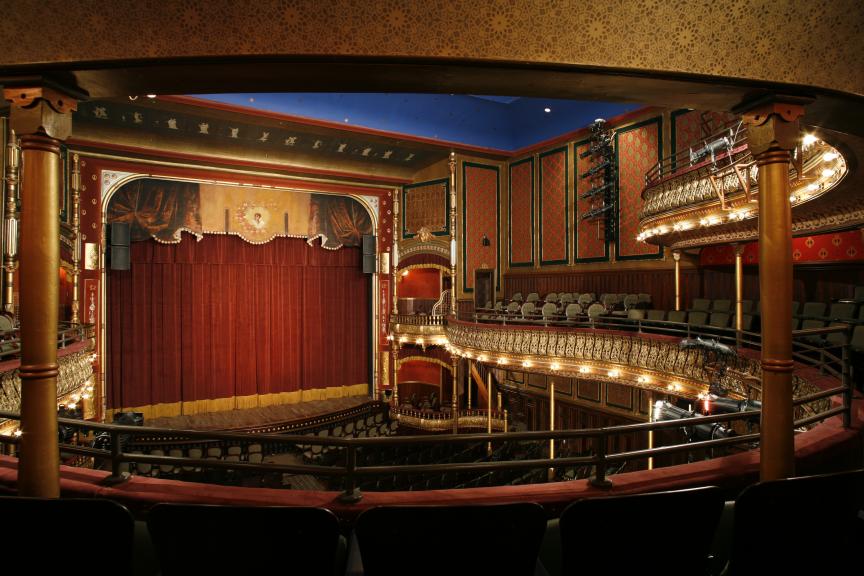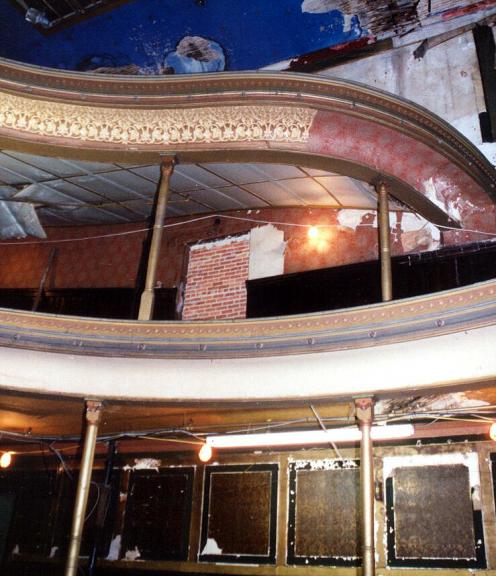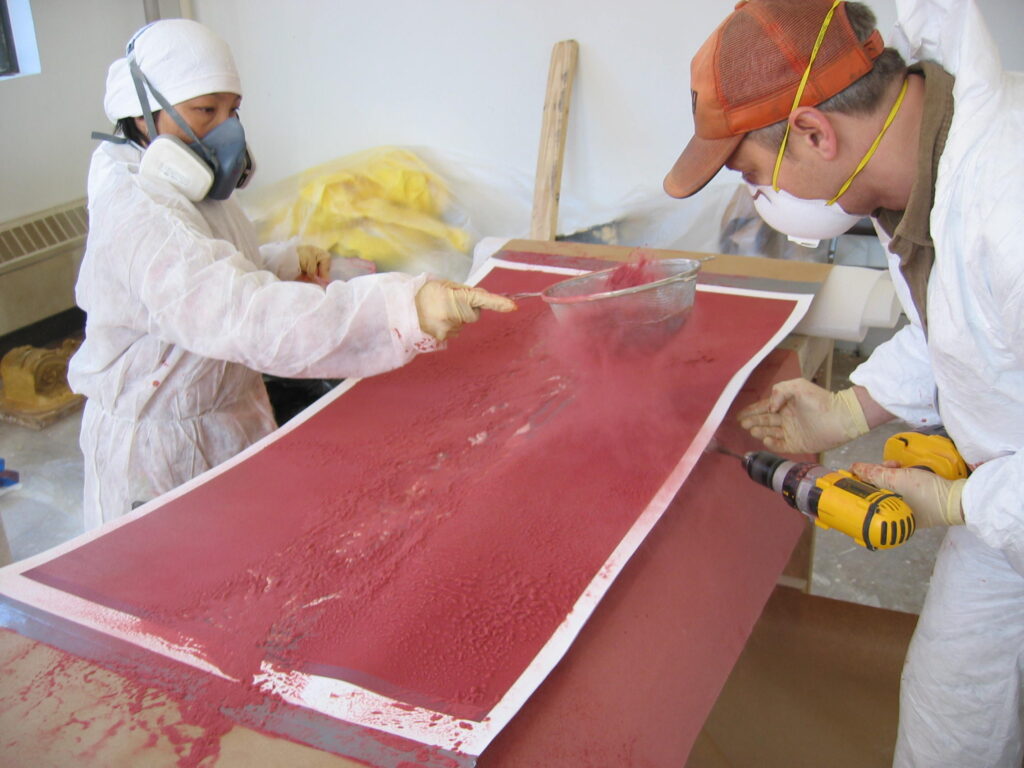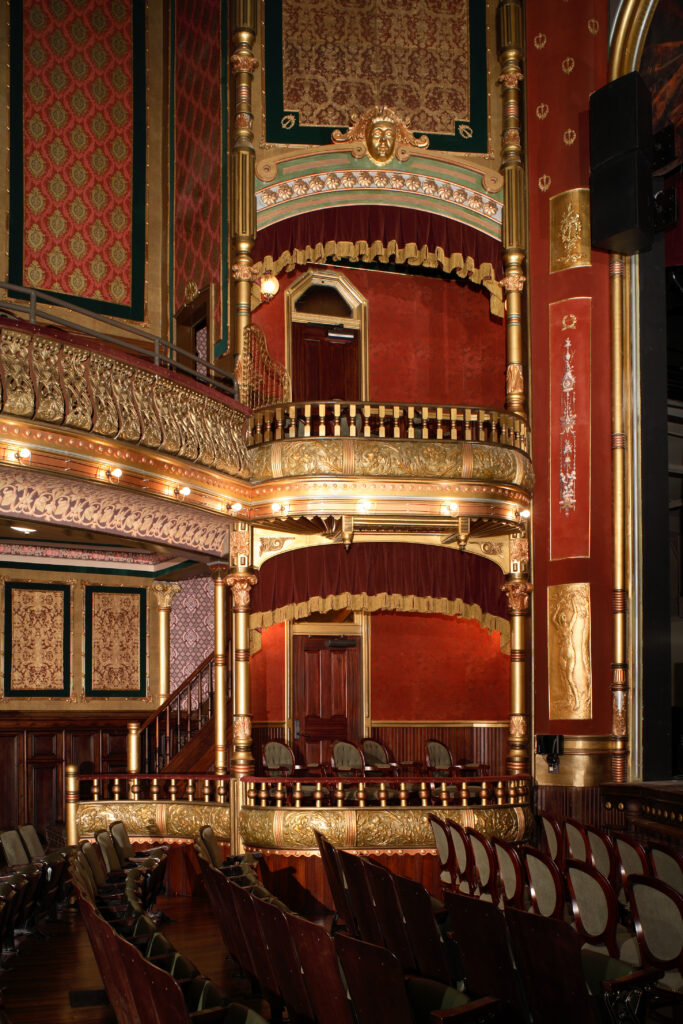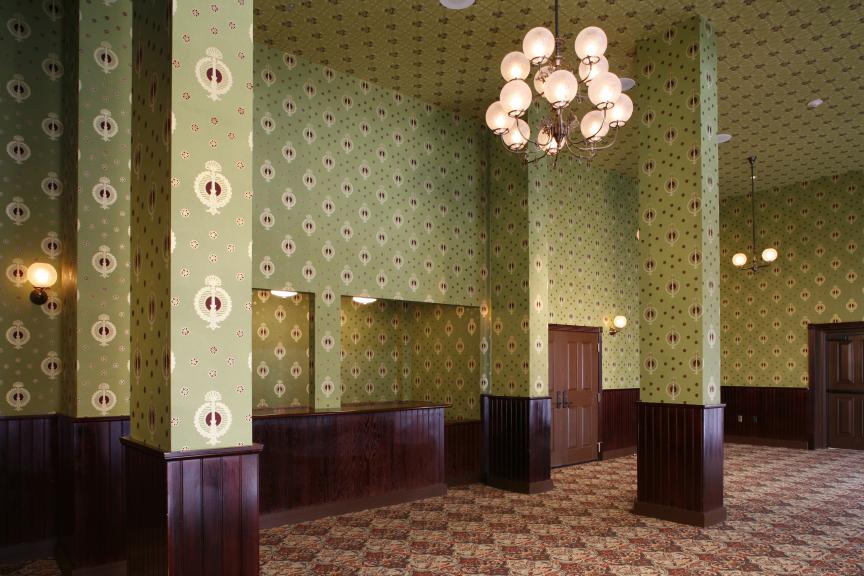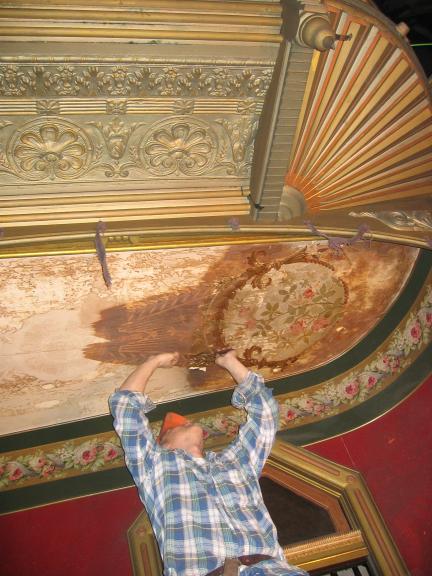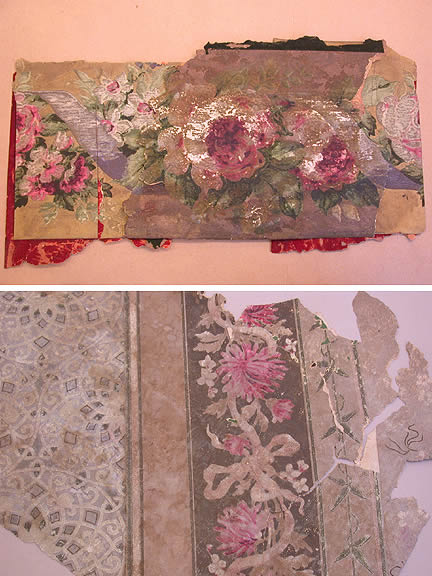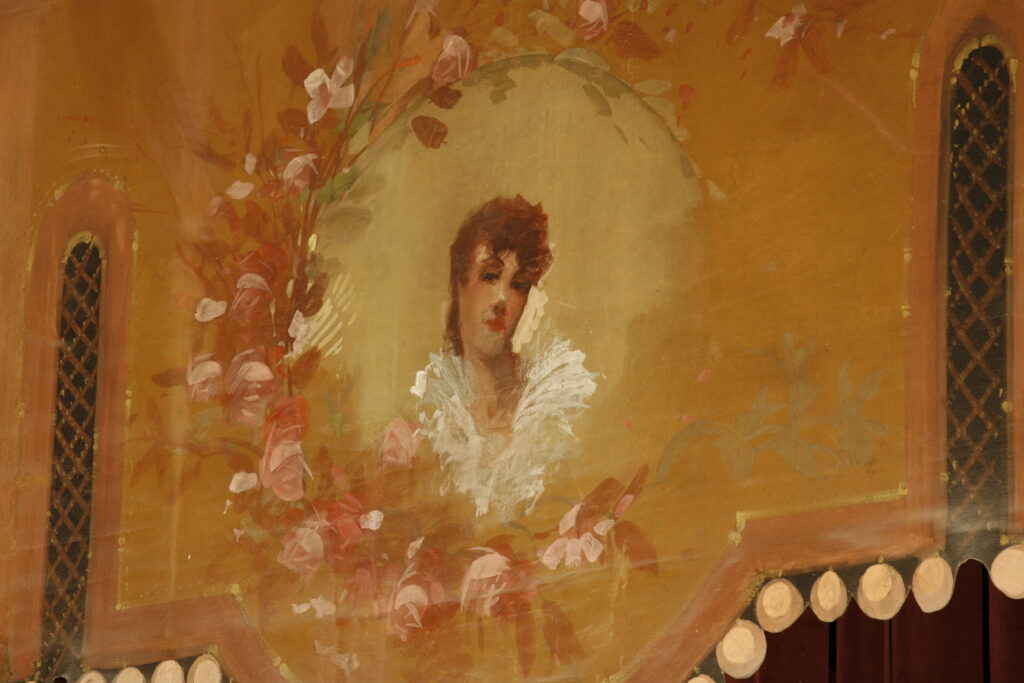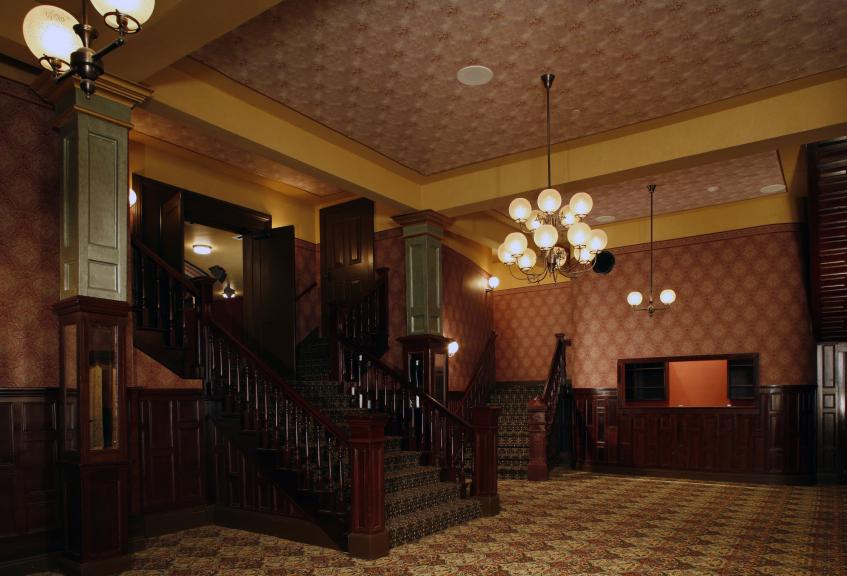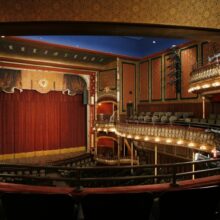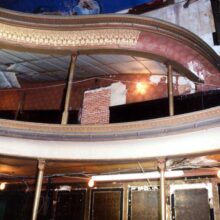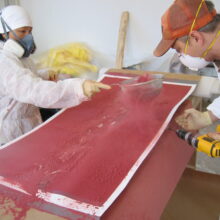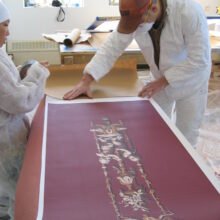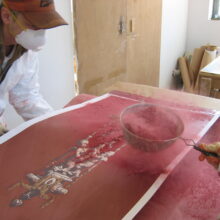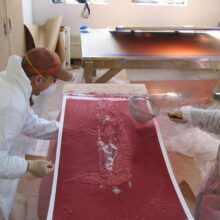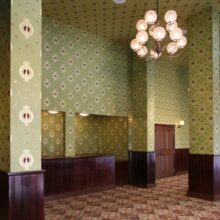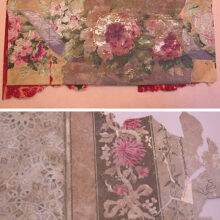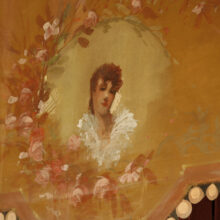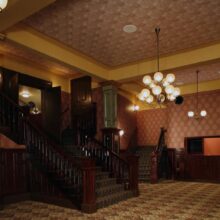Grand Opera House, Meridian
The Grand Opera House was built in 1889 by Architect G. M. Torgenson and interior designer J. B. McElfatrick on the second floor of a department store owned and operated by I. Marks and Levi Rothenberg, who wanted to make Meridian more artistically and culturally rich by providing a location to stage all types of performances from operas to vaudeville. It closed its doors in 1927 until 2000, when the theater received funding for the major renovations needed to restore it back to its former glory.
EverGreene served as the primary contractor for the interior restoration. We performed a detailed historic finishes investigation throughout the auditorium, lobbies, and dressing rooms with help from the research team at the Cooper-Hewitt National Design Museum and discovered 49 different types of wall fabric coverings from three different decorative campaigns (1890, 1901, and 1923), as well as paper maché, composition ornament, fabric, painted plaster, painted wood and natural-finished wood on the walls and ceiling surfaces . Twenty-five of the existing historic wall coverings were chosen for conservation or replication / fabrication including:
- Metallic and glitter finishes applied with traditional and modern silk-screen techniques on digitally printed papers or hand-finished papers
- Reproduction of flock-on-flock patterns
- Flocking on digitally printed replicas of hand-blocked trompe l’oeil
- Reproduction of anaglypta (imitation tooled leather) by casting methods and hand-painted decorative finishes
- Hand-painted metallic glazed finishes on woven textured paper
- Hand-painted decorative finish backgrounds for silk-screened patterns on paper
- Digital artwork and production to replicate colors and textures of hand-blocked and machine-printed papers, including florals, geometrics, trompe l’oeil, damask, trellis, mottling, textured faux finish, craquelure, and appliqué
